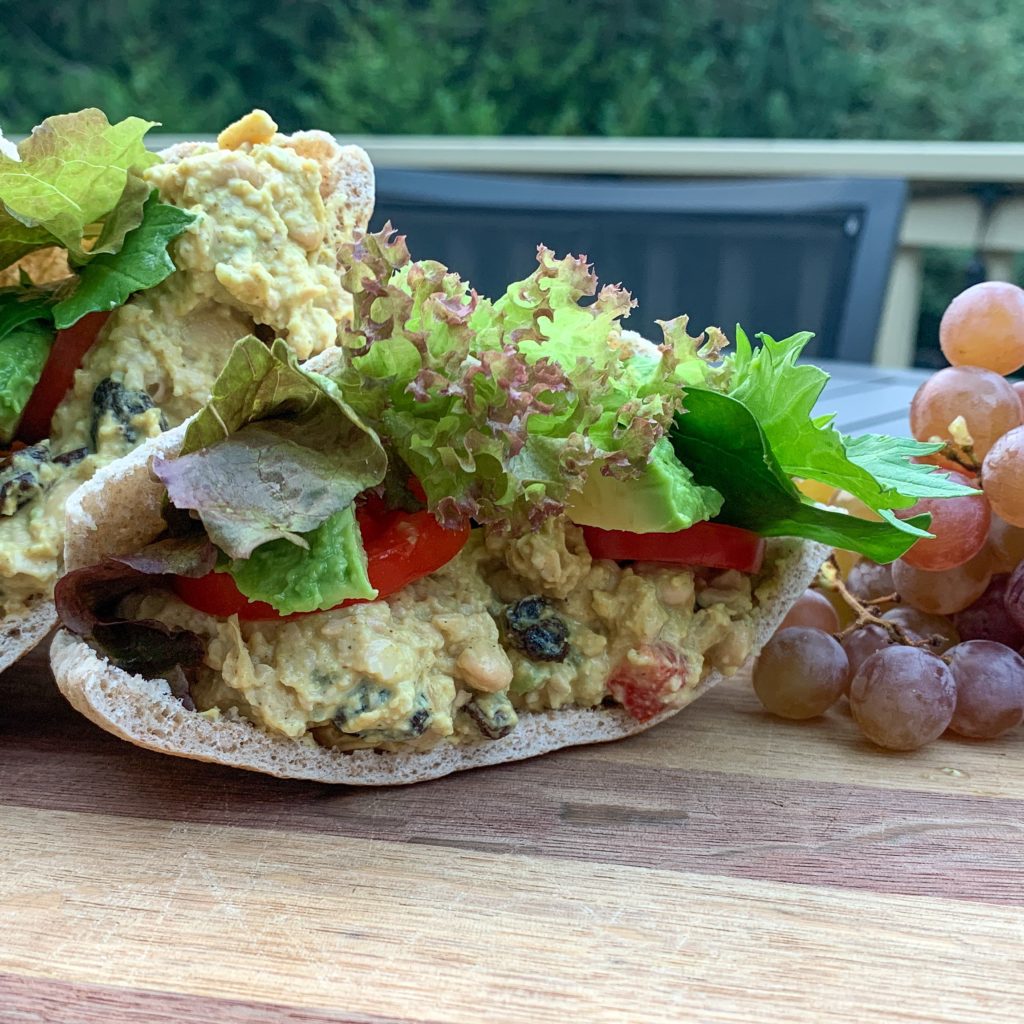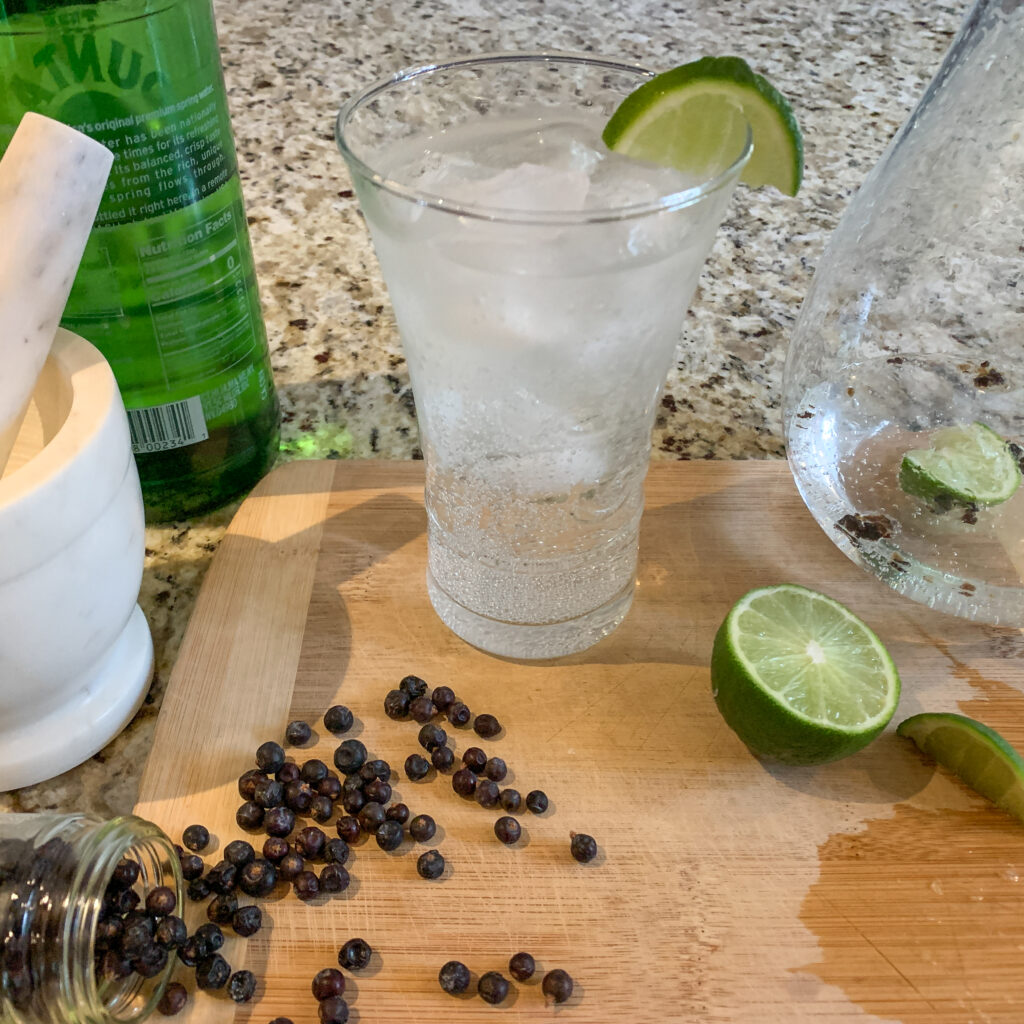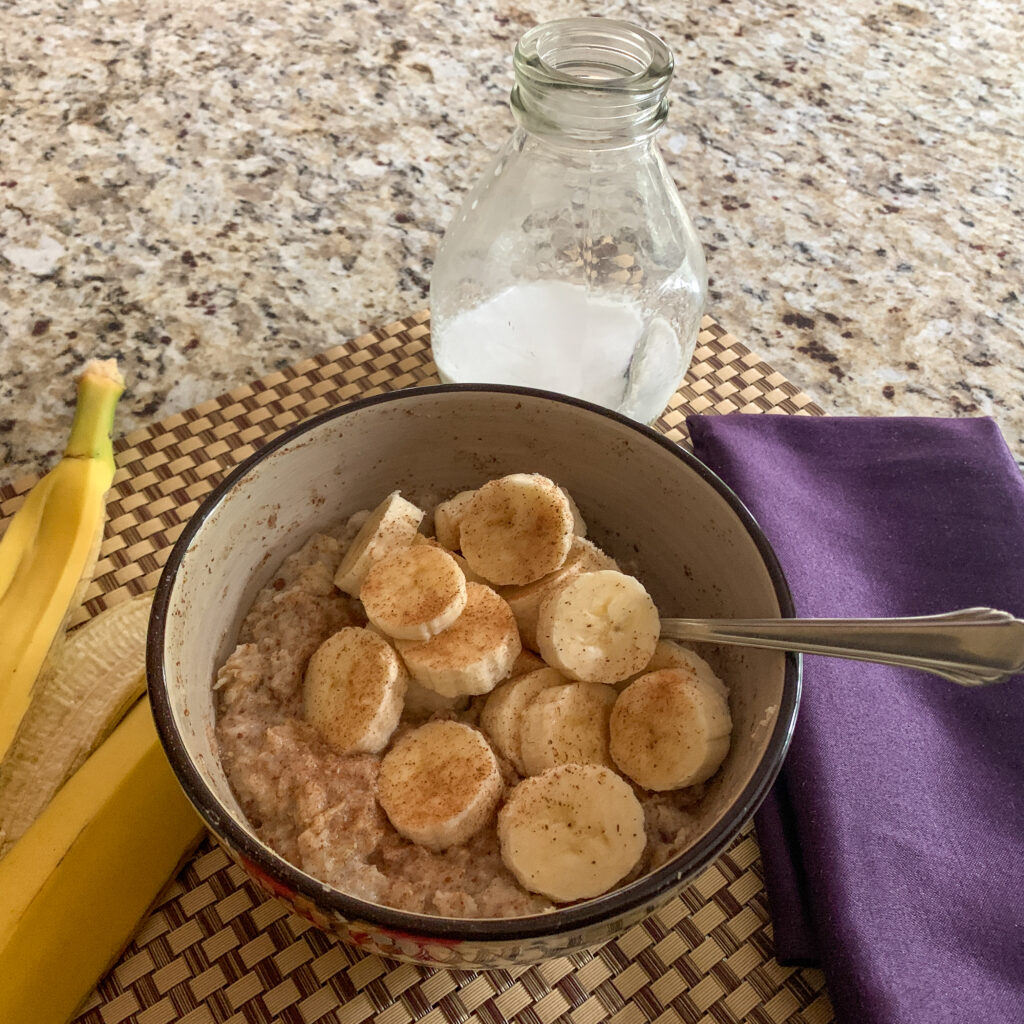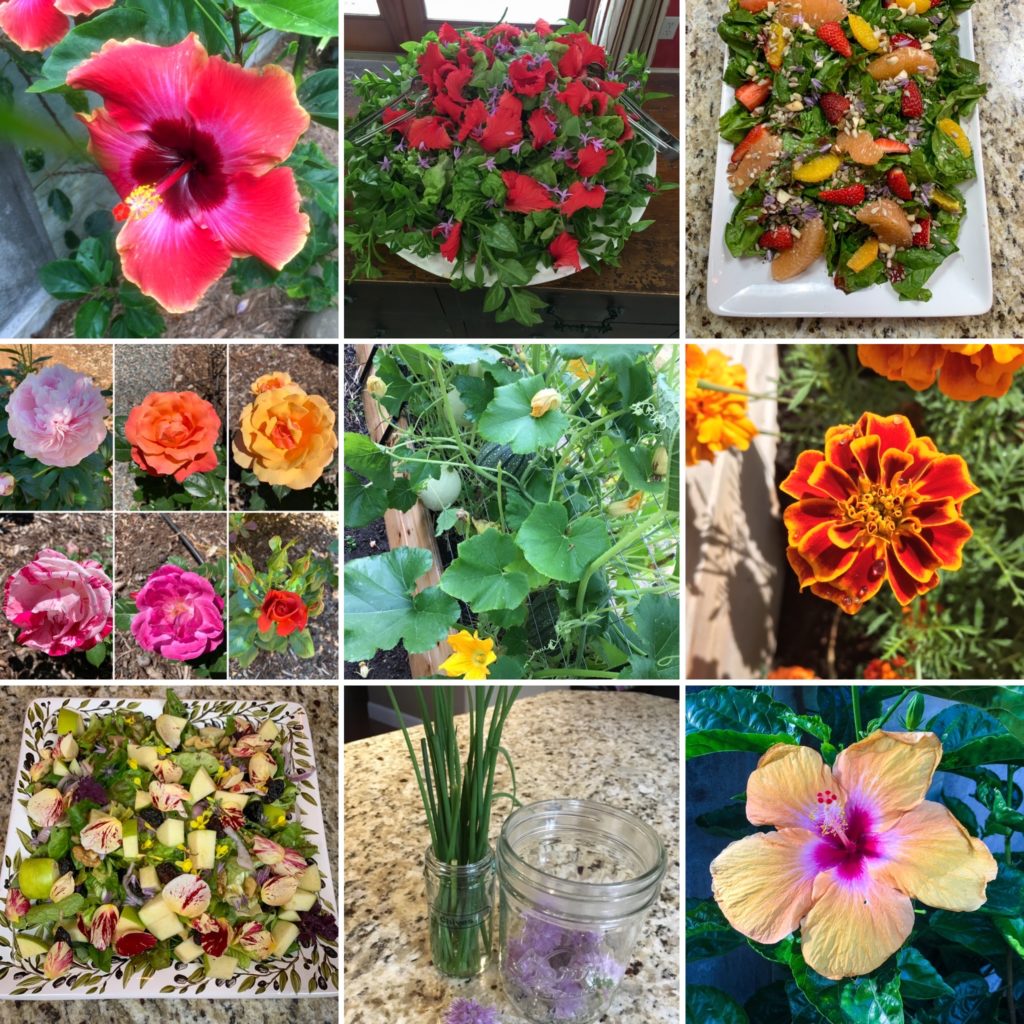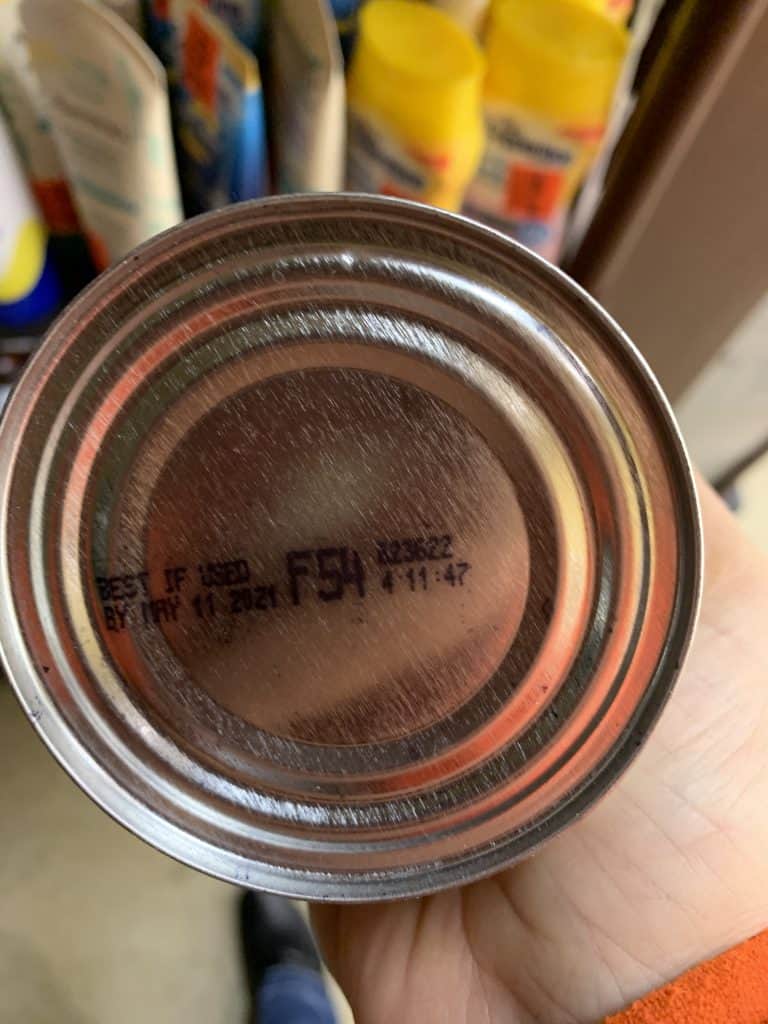Infused Water
#VeganMoFo18 Day 17 – Infused Water
Water is essential for our good health. Our bodies contain 50-70% water, depending on the amount of lean muscle mass (lean muscle consists of 70-80% water and fat has approximately 10% water). We need water as a medium for biochemical reactions and nutrient absorption, maintaining circulating blood volume, body temperature regulation, and protection of vital organs. It doesn’t take much water volume loss for severe problems, just 10% of total body water—20% loss can be fatal! We can generally only survive up to ten days without water (five days for children).
We lose water through sweat, urinary excretion and bowel movement, blood loss, and bodily functions, including breathing. Signs of water loss, from mild to severe, include thirst, loss of appetite, impaired performance, increased exertion, nausea, difficulty in concentrating, difficulty regulating body temperature, dizziness, weakness, shortness of breath, muscle spasm, delirium, insomnia, and renal failure.
So how much water do we need to take in per day? We do get water from foods we eat, approximately 1 liter per day from food and and a small amount from body metabolism. Through meta analysis of current scientific literature, Michael Greger, MD of NutritionFacts.org recommends 4-7 cups (8-oz. glasses) of water daily for women and 6-11 cups for men, with moderate physical activity in moderate temperatures.
How Many Glasses of Water Should We Drink a Day?
Based on the potential benefits of proper hydration such as reduced bladder cancer risk, how many cups of water should we strive to drink every day? New subscribers to our e-newsletter always receive a free gift. Get yours here: https://nutritionfacts.org/subscribe/ I’ve previously touched on the cognitive benefits of proper hydration here: Does a Drink Of Water Make Children Smarter?
According to the American Council on Exercise (ACE), recreational exercisers should simply let thirst be their guide for hydration with exercise, and drink water when thirsty. ACE does suggest considering the guidelines from the US Track and Field Association for exercise hydration:
- 2 hours prior to exercise, drink 17-20 oz. of fluid
- Every 10-20 minutes during exercise, drink 7-10 oz. of fluid, depending on sweat rate
- After exercise, drink 16-24 oz. of fluid for every pound of body weight lost (requires that you weigh yourself before and after exercise)
Athletes or endurance racers, however, may need to do some additional calculations in order to determine their individual water needs. Calculations for athletes are determined by calculating sweat rate, usually measured through body weight before and after exercise, taking into consideration additional intake and output during activity.
Many people, including some of my clients, admit they just don’t like drinking water. Water is best, but you can get some of your water from coffee or tea. Two cups of coffee, with less than 240 mg of caffeine a day, is unlikely to cause dehydration, but alcohol can increase urine output and dehydrate you. Water really is the best hydrating drink. So how can we encourage ourselves to drink the adequate amounts of water we need?
Tips for drinking more water:
- Carry a refillable water bottle with you at all times, preferably glass or metal, not plastic. You will sip it, unaware, if it’s there, really!
- Have chilled water available, whether chilled in your refrigerator or available ice cubes
- Drink herbal teas, which do not contain caffeine
- Enjoy two cups of coffee a day, and then move on to water or other unsweetened, water-based beverages
- Use a water filter if you don’t like the taste of your water out of the tap
- Make infused waters
Infused Water
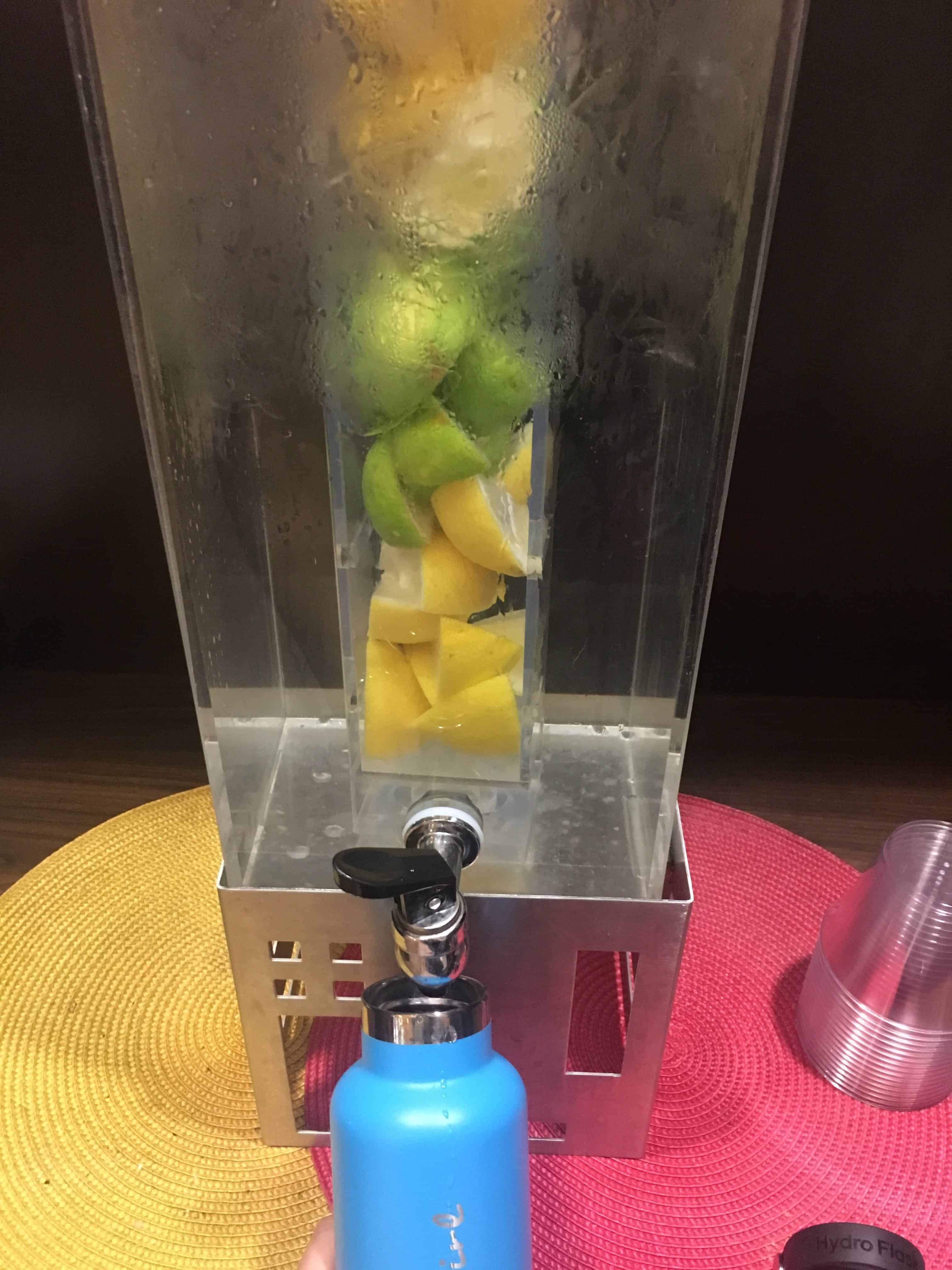
Infused Water at Residence Inn
Infused waters are a great way to drink more water, especially for kids. At our house, we call it Spa Water, named after the beautiful infused waters we first noticed at spas and had at massage appointments. Infused waters are like teas, but generally are made by putting fruits, vegetables, herbs, or flowers into cold water and letting their flavors infuse into the water. Teas are technically infusions, as flavors are infused in hot water.
We make infused water every day. It tastes refreshing, is beautiful, and we keep it at eye level in our refrigerator so we are reminded to pour ourselves some when we open the fridge! We used a regular pitcher for a long time, and it’s really doable that way, but then treated ourselves to an infusion pitcher, which has a screen similar to a French press coffee pot that keeps the fruits, vegetables, herbs, or flowers from pouring out or disrupting the flow while filling our glasses. We like this one from Amazon.

Infusion pitcher with metal screen to keep contents from pouring out
Our favorite infused waters are:
Blue Water

Butterfly Pea Flower Water
Blue Water is made with Butterfly Pea Flowers, a member of the morning glory from Thailand, and we like to add sliced mandarin oranges. The Butterfly Pea Flowers don’t have any flavor, but impart a gorgeous cobalt blue into the water. This blue is a phytonutrient and potent antioxidant, anthocyanin, which is the same powerful antioxidant in blueberries, red cabbage, and apple peels. I first learned about these awesome petals during the Clean Food Dirty Girl Hawaiian Retreat this summer and purchased the Butterfly Pea Flowers from Amazon as soon as I got home!
Kids love the blue water, even if it doesn’t have any special taste! It looks like Kool-Aid but is so healthy. But the other thing that makes it cool is that infusions with Butterfly Pea Flower change color when acid is added to them, giving it the name, mood changing flower! It is a fascinating pH indicator! Here is a web article from Bon Appetit with a video showing the color change. The grandkids love to experiment adding different foods to their blue water to see how the color changes!
Hibiscus Lemon Berry
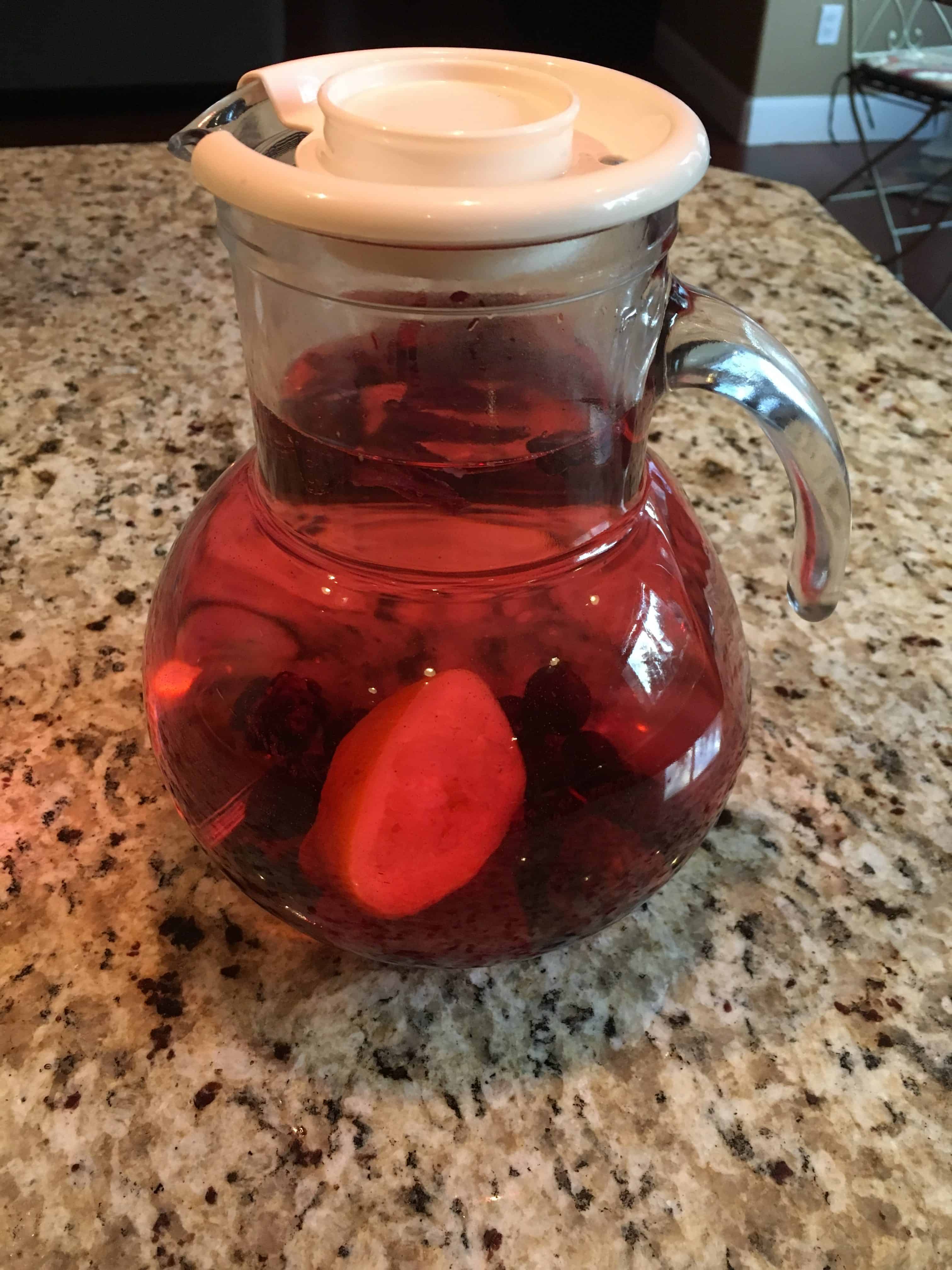
Hibiscus Lemon Berry Infusion
This infusion is made with dried hibiscus flowers, lemons, and mixed berries. I first became intrigued about the antioxidant properties of hibiscus when reading Dr. Greger’s book, How Not to Die. It is rich in Vitamin C and lowers blood pressure. It really is a potent antihypertensive, though, so you don’t want to drink more than a quart of this a day. Switch to another infusion after you’ve had this one and take caution if you already have low blood pressure or are taking antihypertensive medication.
I pick up organic lemons when they are in the reduced produce bin. When I get home, I wash the outside, grate the zest with my Microplane, cut the lemon in half and squeeze out the juice. I freeze the zest in a glass jar for later, freeze the juice in my stainless steel ice cube tray and save the frozen cubes in jars for when I need juice, and then freeze the zested and squeezed lemon halves in a mason jar to use in my infusions! It is important to use organic fruits, including citrus, if you are going to use the peel in your food or expose the peel to your infused water (this includes oranges, grapefruits, apples, etc).
Cucumber Basil Ginger
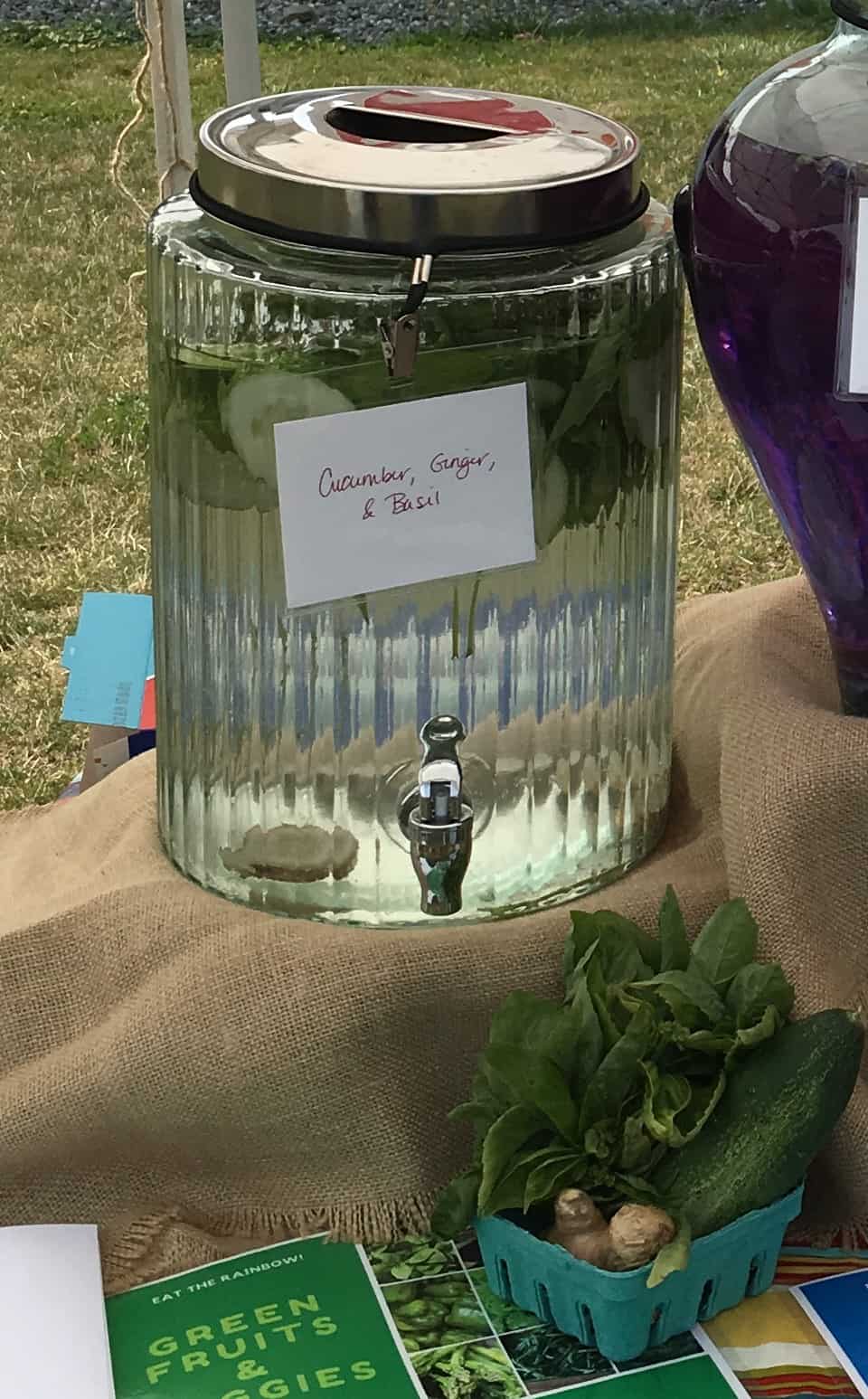
Cucumber Basil Ginger Infusion
This is just a yummy and refreshing combination! You can switch out the basil for mint. Cucumbers are very hydrating and soothing. Use organic cucumbers if you aren’t planning on peeling them. Conventional cucumbers are coated with a waxy preservative that you don’t want in your infused water.
Orange, Cranberry, and Cinnamon Stick

Orange, Cranberry, Cinnamon Stick
I like to freeze cranberries when they are available in the Fall/Winter and then use them in my infusions. Cranberries and oranges are high in vitamin C and cinnamon is a powerful antioxidant and known to lower blood sugar. This combination reminds me of autumn!
Other Great Infusion Combinations
- Apricot, Raspberry, and Mint
- Strawberry, Lemon, and Mint
- Apple, Lemon, and Carrot
- Strawberry and Pineapple
- Peach, Plum, and Mint
- Cucumber, Lemon, and Celery
- Apple, Pear, and Cinnamon Stick
- Grapefruit and Rosemary
- Cucumber, Thyme, and Lime
- Strawberry, Basil, and Lime
Do you like this post? Please share....
If you liked this post, you might like one of these:
Categories:

[Trī-māz-ing]
Cindy wants you to be Trimazing—three times better than amazing! After improving her health and fitness through plant-based nutrition, losing 60 pounds and becoming an adult-onset athlete, she retired from her 20-year firefighting career to help people just like you. She works with people and organizations so they can reach their health and wellness goals.
Cindy Thompson is a national board-certified Health and Wellness Coach, Lifestyle Medicine Coach, Master Vegan Lifestyle Coach and Educator, Fitness Nutrition Specialist, Behavior Change Specialist, and Fit2Thrive Firefighter Peer Fitness Trainer. She is a Food for Life Instructor with the Physicians Committee for Responsible Medicine, Rouxbe Plant-Based Professional, and Harvard Medical School Culinary Coach, teaching people how to prepare delicious, satisfying, and health-promoting meals.
She provides health and lifestyle coaching at Trimazing! Health & Lifestyle Coaching. Cindy can be reached at info@trimazing.com.
Subscribe to the Trimazing Blog
Receive occasional blog posts in your email inbox.
Subscribe to the Trimazing Blog
Receive occasional blog posts in your email inbox.











